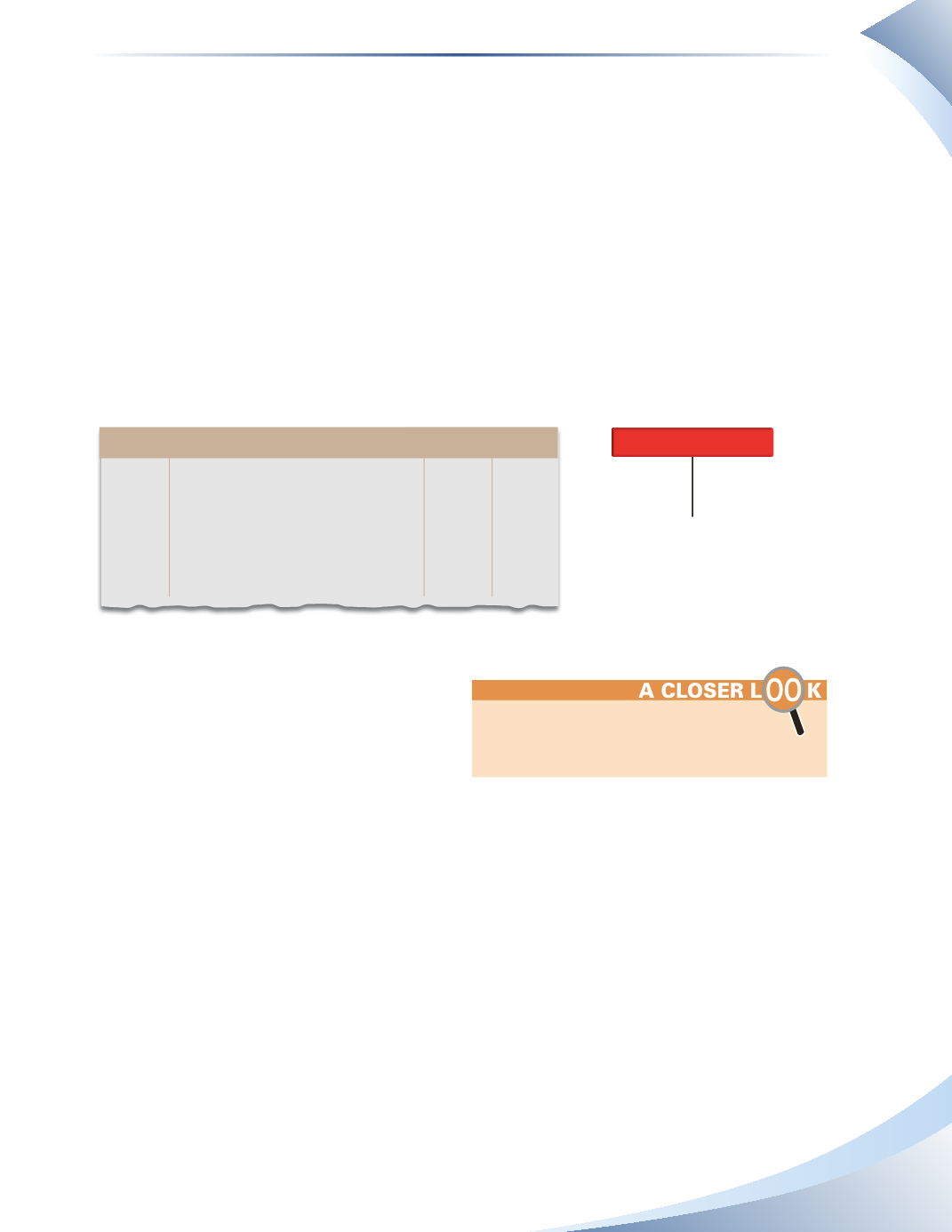
Chapter 11
Payroll
333
At this point, payroll for the employee is complete. It is now time for the employer to pay the
payroll liabilities that have been created.
Paying the Payroll liabilities
Amounts deducted from payroll are owed to the government and other institutions.After recording
the journal entries for the employee payroll and the employer contributions, the employer has a
number of liability accounts that must be paid.
First, the employer must actually pay the employee. Initially the net pay was recorded in salaries
payable because the actual pay is going to be paid on a different day. Thus, to pay the employee,
decrease cash and decrease the liability, shown in Figure 11.6. Remember, if the employee was
paid on the same day as the payroll entry, cash would have been credited in Figure 11.3 instead of
salaries payable and this entry on February 1 would not be needed.
SALARIES PAYABLE
-
+
3,339.19 Jan 31
Feb 1 3,339.19
Journal Page 1
Date
2015
account title and explanation Debit credit
Feb 1 Salaries Payable
3,339.19
Cash
3,339.19
To pay employee
______________
FIGURE 11.6
Next, because our example is not in the prov-
ince of Quebec, all the statutory deductions
must be sent to the CRA. This is called a
payroll remittance. This remittance includes
the employee and employer portion of CPP,
the employee and employer portion of EI and the income tax.The business will have a schedule to
follow to make the remittance to the CRA.Most moderate-sized businesses must send the amount
by the 15
th
of the following month. If the employer fails to make the remittance on time, it will pay
penalties and interest on the amount owing.
Since the payroll in our example is for January, the remittance must be made by February 15, 2015.
The journal entry to make the payment is shown in Figure 11.7. All the liability accounts are
debited by their balance to clear them, and the total amount is cash sent to the CRA.
In Quebec, QPP, QPIP and provincial income
tax are sent to Revenu Quebec and the EI and
federal income tax is sent to the CRA.


